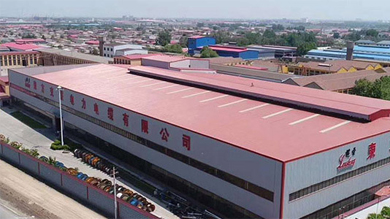നവം . 12, 2024 16:05 Back to list
severe service
Understanding Severe Service in Industrial Applications
In the realm of industrial operations, the term severe service refers to equipment and processes that operate under extreme conditions. This could involve high pressures, extreme temperatures, corrosive environments, or heavy wear and tear. Understanding severe service is crucial for industries such as oil and gas, chemical manufacturing, power generation, and other sectors where the reliability and efficiency of equipment are paramount.
Defining Severe Service
Severe service environments often challenge the integrity and performance of valves, pumps, and other critical components. Conditions may include high-pressure systems that exceed standard operating thresholds, extreme temperatures that can affect material properties, and corrosive substances that can degrade equipment rapidly. In these settings, traditional equipment may fail, leading to costly downtime, safety risks, and significant financial losses.
Examples of severe service applications include sour gas processing, where hydrogen sulfide (H2S) is present, and high-temperature steam systems that can reach well above 500°F. In these cases, specialized materials and robust designs are necessary to withstand the rigors of operation.
Importance of Proper Equipment Selection
Selecting the right equipment for severe service is vital. Engineers and procurement teams must consider various factors, such as the chemical compatibility of materials, the ability to withstand thermal expansion and contraction, and the overall durability of components. For instance, materials like high-alloy stainless steels, carbon steels with protective coatings, or even exotic alloys might be necessary to ensure longevity and reliability in hostile environments.
In addition, equipment must often exceed standard industry ratings. For instance, valves used in severe service applications may need to be rated for higher-pressure classes or feature enhanced sealing technologies to prevent leaks. Failure to account for these factors can result in disastrous outcomes, including catastrophic equipment failures and severe environmental incidents.
Maintenance and Inspection
severe service

While proper equipment selection mitigates risks, ongoing maintenance and rigorous inspection protocols are essential to ensure ongoing performance and safety. In severe service environments, the wear and degradation of parts can occur quickly, necessitating more frequent inspections. Predictive maintenance technologies, such as vibration analysis and thermal imaging, can help identify potential failure points before they lead to significant issues.
Additionally, organizations must establish clear guidelines for the maintenance of severe service equipment, including lubrication schedules, parts replacement intervals, and staff training. By investing in these practices, companies can extend the life of their equipment, improve safety, and optimize operational efficiency.
The Role of Technology
Advancements in technology have led to improved designs and materials that can better withstand severe service conditions. The integration of smart sensors into industrial equipment allows for real-time monitoring of performance parameters, providing valuable data to operators. This data enables better decision-making and more effective maintenance strategies, reducing the likelihood of unexpected failures.
Moreover, manufacturers now offer specialized products designed specifically for severe service applications. These products often incorporate lessons learned from previous failures and innovations in material science, resulting in more durable and reliable equipment.
Conclusion
The importance of understanding severe service cannot be overstated. It is not just a matter of equipment selection; it encompasses maintenance practices, technological integration, and a culture of safety within organizations. By prioritizing the needs of severe service applications, industries can protect their assets, ensure the safety of their personnel, and maintain operational efficiency.
In summary, as industrial operations continue to evolve, so too must our approach to managing severe service conditions. Companies that proactively address these challenges will not only improve their operational outcomes but also enhance their competitive edge in the marketplace.
Share